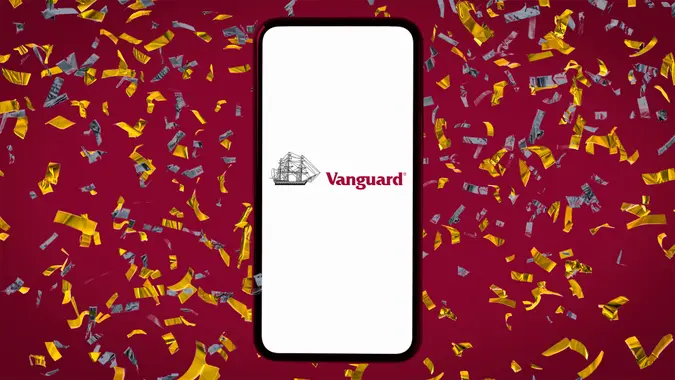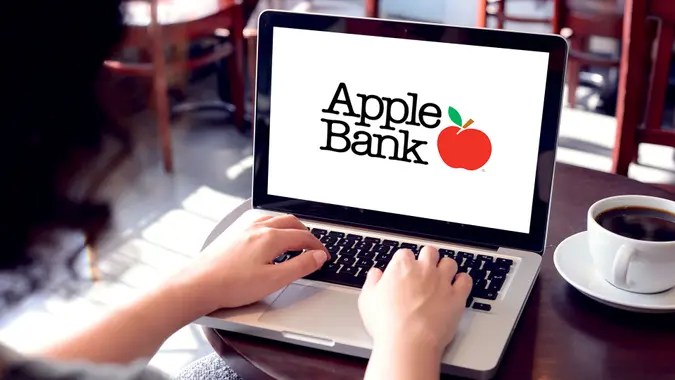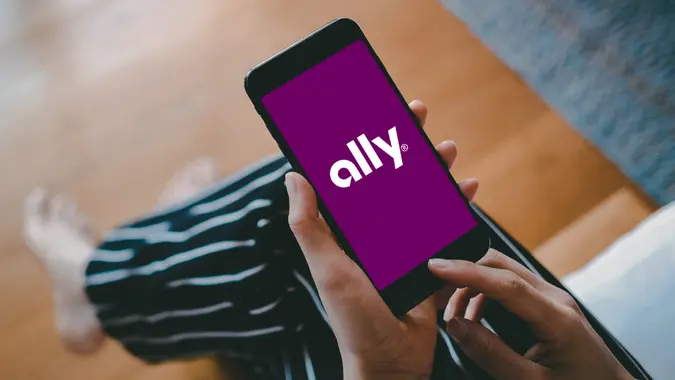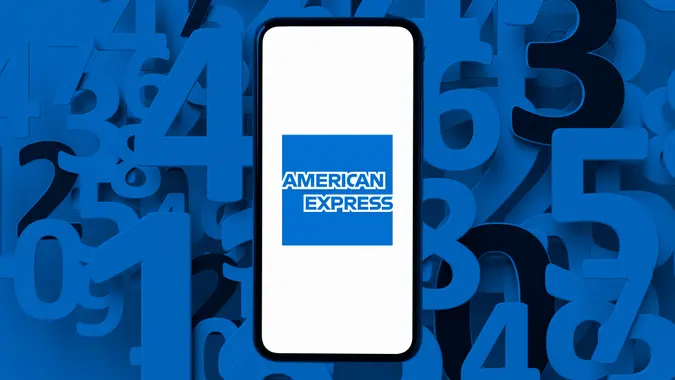How To Open a CD Account in 5 Simple Steps

Commitment to Our Readers
GOBankingRates' editorial team is committed to bringing you unbiased reviews and information. We use data-driven methodologies to evaluate financial products and services - our reviews and ratings are not influenced by advertisers. You can read more about our editorial guidelines and our products and services review methodology.

20 Years
Helping You Live Richer

Reviewed
by Experts

Trusted by
Millions of Readers
Not sure how to open a certificate of deposit (CD) account? It’s easier than you might think. All it takes is choosing a bank, picking a term that fits your savings goals and making a deposit. Here’s what you need to know.
Step-by-Step: How To Open a CD Account
Not sure how to open a CD account? Follow these five quick steps.
Step 1: Choose the Right CD for Your Needs
Although all CDs serve the same purpose, different CD types cater to individual needs.
- Traditional CDs: This CD comes with a fixed term and interest rate. You cannot add funds to this account, and withdrawing the money before maturity may lead to penalties.
- Add-on CDs: You can add money over time with this CD until it matures. Some banks may allow you to add as many times as you like, while others cap how much you can add on and how many times.
- No-penalty or liquid CDs: This CD type lets you withdraw your money when you need it without incurring penalties. However, there may be instances where you may need to remove all of the money in the account when you do so.
- Callable or redeemable CDs: These CDs allow the financial institution to redeem before maturity if interest rates fall.
- Jumbo CDs: This CD account offers higher interest rates than traditional CDs. They require larger minimum deposits, however, which may range in the six figures.
- High-yield CDs: A high-yield CD gives a much higher interest rate than traditional CDs and savings accounts. They may have significant early withdrawal penalties and require higher deposits to open.
Step 2: Find a Bank or Credit Union That Offers CDs
To help you decide where to open a CD, here’s how online banks compare to traditional banks and credit unions across some key features.
| Feature | Online Banks | Traditional Banks and Credit Unions |
|---|---|---|
| Interest rates | Generally higher APYs | Typically lower rates |
| Fees | Usually minimal or none | Service or maintenance fees |
| Access and convenience | Fully digital | In-person assistance |
| Minimum deposit requirements | Often lower | Usually higher |
| Customer support | Online chat, email, phone | In-person, online, email, phone |
| Promotional offers | Often offers introductory bonuses and high-yield specials | Fewer digital promotions |
Step 3: Gather What You’ll Need To Apply
To open a CD, you’ll most likely need:
- Application form: Fill out an application form to input your name, address and contact information. The application may be online or on-site, depending on your institution.
- Valid ID: Provide a valid form of government-issued identification, like a state ID, a passport or a driver’s license. Some banks may ask for more than one valid ID.
- Social Security number: Be prepared to provide your Social Security number or tax ID number.
- Proof of residence: You can present a bank statement, utility bill or valid document that has your name and address to show your proof of residence.
Good To Know
CD requirements may vary slightly by bank, so consult your bank’s guidelines. You can find them listed on their website, by calling or visiting the bank in person.
Step 4: Decide How You’ll Fund the CD
You can fund your CD in a few ways. Use an external bank account, transfer from an existing checking or savings account at the same bank, send a wire transfer or make an in-branch deposit.
Just make sure you have enough to meet the minimum deposit requirement.
Step 5: Finish Your Account Setup
Review the account terms, including the interest rate and any withdrawal penalties. Confirm how you’ll fund the CD, then complete the transaction.
Sign any required documents and keep your confirmation for your records.
CD Pros and Cons: What To Know Before You Lock In
Thinking about opening a CD account? Here’s a quick breakdown of the pros and cons to help you decide if it’s right for you.
| Pros of CDs | Cons of CDs |
|---|---|
| Interest rate is guaranteed | Limited liquidity |
| FDIC-insured | Lower returns compared to stocks |
| Higher interest rates than regular savings accounts | Inflation may outpace returns |
| No market risk | Locked in rates |
| Simple and easy to manage | Early withdrawal penalty |
Common CD Mistakes To Avoid
CDs are an accessible investment, but you want to make certain you’re not overlooking any details. Be on the lookout for the following:
Not Reading the Fine Print
Most CDs, with the exception possibly being no-penalty CDs, charge penalties for early withdrawals. The penalty that a bank or institution charges will vary.
Make sure you understand the CD’s penalty, fees and terms. Otherwise, you could lose money instead of saving it.
Choosing the Wrong Term Length
CDs come in a wide variety of term lengths. If you choose a CD with a term length that’s too long or too short, it may not align with your financial goals.
For example, if all your money is in a five-year CD and you need it early, you’ll face an early withdrawal penalty. In that case, a CD might not be the best place to keep your cash.
Ignoring Rate Comparisons
CD rates vary depending on your bank or financial institution. If you don’t compare the rates, you could be missing out on some accounts that offer great rates.
You might be able to find a higher CD rate at an online bank vs. a traditional bank, for example, since there are fewer overhead costs.
Final Takeaway: Opening a CD Is Simple — If You Plan Ahead
Opening a CD account does not have to be daunting when you know what type you want to choose and the terms and implications of your choice.
By researching and identifying what CD is best for your financial goals, you can grow your savings and know that your funds are safe.
How To Open a CD: FAQ
Got questions about opening a CD? Here are the most common ones — and what you need to know before you get started.- How do you open a CD account?
- To open a CD, you can apply online or in-person at a bank or credit union. You'll have to provide identification, choose your term and fund your account.
- Where can I buy a CD?
- You can go to banks and credit unions in-person or online to open a new CD account.
- How do you pay for a CD account?
- To fund your CD, you can transfer money from your savings or checking account. You can also set up a wire transfer or make a deposit at the branch.
- How much money is needed to open a CD account?
- Minimum deposits vary by bank. They can range from $250 to $1,000.
Melanie Grafil and Hiba Boutary contributed to the reporting for this article.
Our in-house research team and on-site financial experts work together to create content that’s accurate, impartial, and up to date. We fact-check every single statistic, quote and fact using trusted primary resources to make sure the information we provide is correct. You can learn more about GOBankingRates’ processes and standards in our editorial policy.
- FDIC. "Deposit Insurance FAQs."
- The Wall Street Journal. 2024. "That 5% CD Is a Great Deal—Until the Bank Calls It Back."
- Barron's. 2024. "Need an Accessible Place to Stash Your Savings as Interest Rates Fall? Try a Penalty-Free CD."
 Written by
Written by  Edited by
Edited by 

























